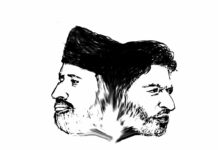Dr. Bashir A Dabla
A famous contemporary sociologist observed that human society was characterized by two parallel but inter-acting phenomena of ‘social statics’ and ‘social dynamics’. While the former referred to aspects of stability like social institutions of family, religion and school, the latter meant the aspects of change such as processes of social transformation as reflected in urbanization, industrialization and modernization. Both these aspects are important for maintenance of social system and social order. To maintain a functioning social system, a certain degree of balance is needed between these two extremes. If the balance between static and dynamics is not maintained or disturbed, it may have disastrous implications.
The ‘curfew days’ represents a phenomenon of ‘total social collapse’ and ‘pathological reaction of change’. The social collapse – institutions stopped functioning; all political, economic, educational, cultural, literary and other actions became static. Besides total collapse of social system there was total failure of social values and principles. The pathological reaction revealed in violent attitudes and behavior among the youth. At the same time, there were neither individual nor collective efforts to maintain social order. The continuous demonstrations sidelined all initiative of social normalcy, net result was loss of 112 lives.
The ‘curfew day’ revealed a significant trend of ‘social pathology’ which introduced all negative and undesirable features in the social life in Kashmir:
*No proper economic-occupational functions.
*No educational functions at all.
*No cultural interaction.
*Social disassociation and social dislocation.
*No parallel programme to traditional work calendar.
*No religious functions, congregations and festivals.
*General social apathy.
*Marital discords and domestic violence.
*No work culture and no work ethic in offices and homes.
*Presenting excuses and arguments for being non-functional.
*Violent attitudes and violent behaviour.
*Extreme political conflict between political parties and political groups.
On the other hand, the ‘curfew days’ phenomenon was presented as service to the political cause and sacrifice for sacred political objective. Keeping away from social world, it was posed as preferable and desirable.
In totality, there emerged a situation which had more negative than positive implications at micro as well as macro level. Even those who started and sponsored the political movement accepted this reality and were compelled to reduce its intensity. A rational, realistic and pragmatic response. Though not the solution but the strategy.
Taking into consideration short-term and long-term implications of ‘curfew days’ ethos, the question arises about continuity of political movement? In fact, that option is available if the struggle is institutionalised, organised and waged unitedly with clear ideological perception and political perspective. Moreover, ‘curfew days’ environment be avoided and a balance between static and dynamics must be attained. That may be possible through continuous, dynamic and united efforts.















